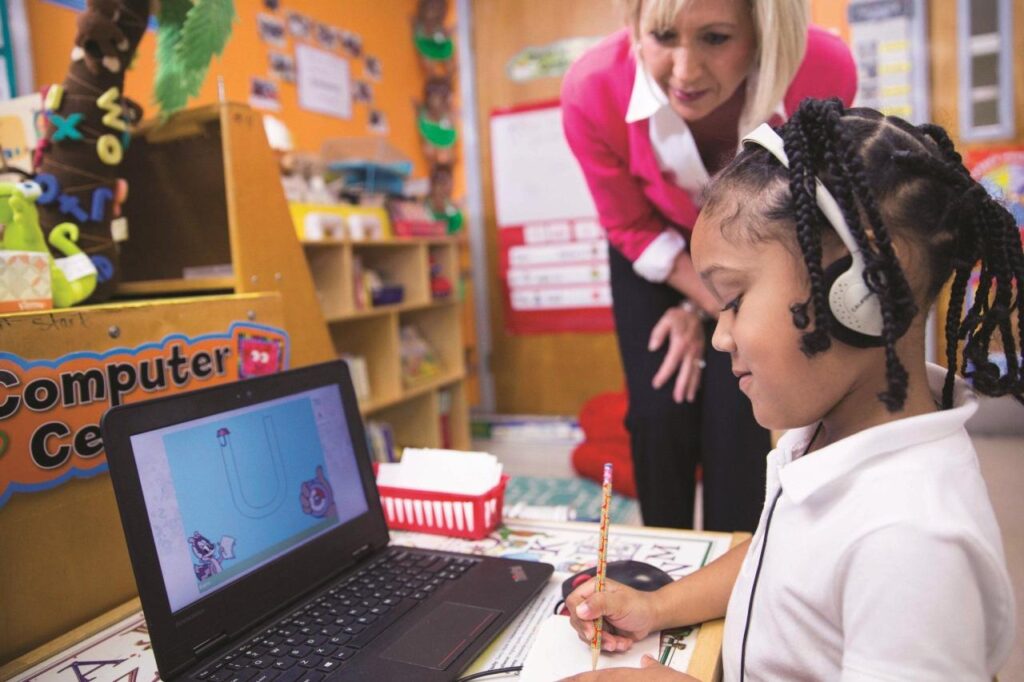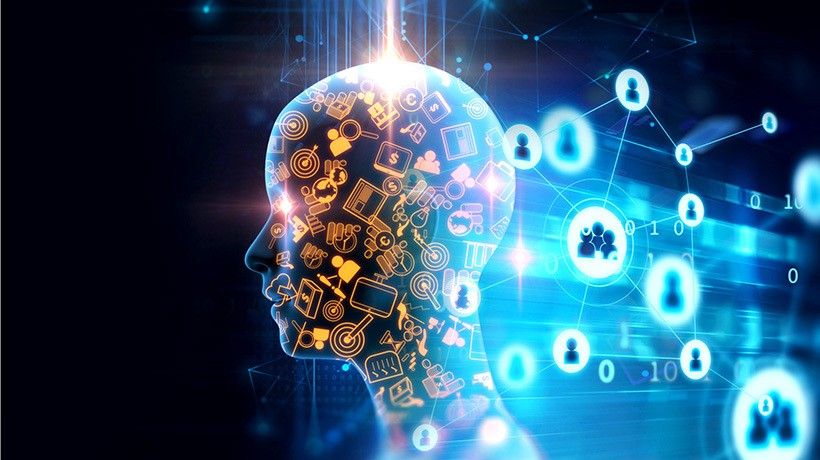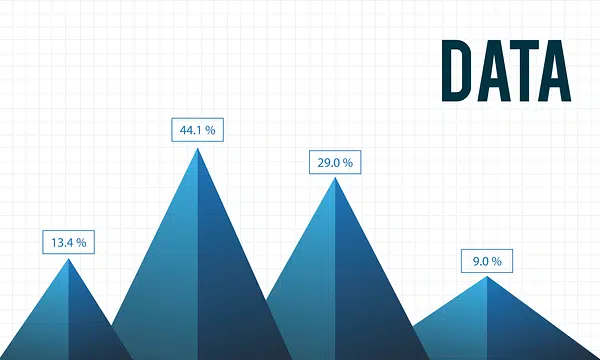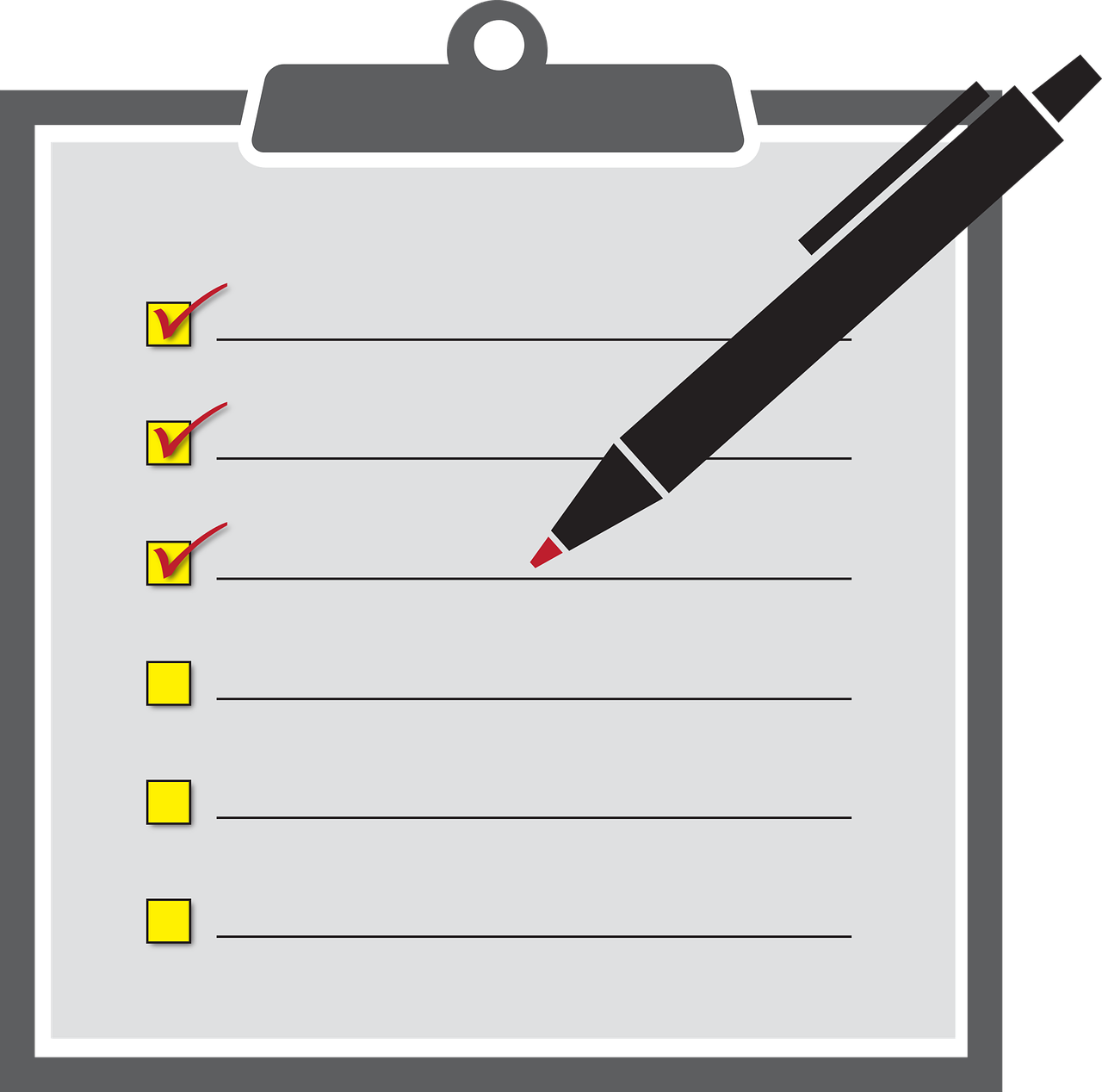The traditional one-size-fits-all model of education is rapidly becoming a relic of the past, increasingly unable to meet the diverse needs and learning styles of individual students. In its place, a powerful new paradigm is emerging: personalized learning, driven by sophisticated adaptive education platforms. This transformative approach leverages cutting-edge technology, artificial intelligence, and rich data analytics to tailor educational experiences to each learner’s unique pace, strengths, weaknesses, and preferences. It’s about moving beyond standardized instruction to create dynamic, responsive, and truly effective learning journeys, fundamentally redefining the future of education itself.
The Imperative for Personalized Learning: Why Now?
To truly appreciate the transformative potential of personalized learning and adaptive platforms, it’s crucial to understand the limitations of conventional education and the forces compelling this significant shift.
A. The Shortcomings of Traditional Education Models
For generations, education has largely followed a standardized, cohort-based model where students progress together through a fixed curriculum at a uniform pace. While this model has served its purpose, it inherently struggles to cater to individual student needs.
- Ignoring Diverse Learning Styles: Students learn in myriad ways—some are visual, others auditory, kinesthetic, or prefer reading/writing. Traditional classrooms often favor one or two styles, leaving many students disengaged or struggling to grasp concepts.
- Fixed Pacing and Remediation Gaps: A fixed curriculum pace means faster learners may become bored, while slower learners fall behind, often without adequate support to catch up. Gaps in foundational knowledge can accumulate, hindering future learning.
- Lack of Individualized Feedback: Teachers, especially in large classes, struggle to provide immediate, tailored feedback to every student. Generic feedback is often insufficient to address specific misconceptions.
- Limited Engagement and Motivation: When content isn’t relevant or delivered in an engaging manner, students can lose motivation. Passive learning environments often fail to spark curiosity or foster deep understanding.
- Difficulty Identifying Specific Weaknesses: In a large group, pinpointing the precise conceptual misunderstandings or skill deficits of individual students can be challenging, delaying targeted intervention.
- Teacher Burnout and Overwhelm: Dedicated educators often feel overwhelmed by the impossible task of catering to 30+ diverse learners simultaneously, leading to stress and reduced effectiveness.
B. Technological Advancements as Enablers
The current surge in personalized learning is largely due to the maturation of several key technologies that were not available in previous decades.
- Artificial Intelligence (AI) and Machine Learning (ML): AI algorithms are the engine behind adaptive platforms. They can analyze vast amounts of student data (performance, engagement, response times) to identify patterns, predict learning pathways, and recommend personalized content or interventions. ML enables these systems to continuously learn and improve their recommendations over time.
- Big Data Analytics: Educational platforms now collect and process enormous datasets on student interactions. Big data analytics allows for extracting meaningful insights from this data, informing both real-time adaptive adjustments and broader curriculum improvements.
- Cloud Computing: Cloud infrastructure provides the necessary scalability and computational power to host and run complex adaptive platforms, making them accessible to millions of users globally without requiring individual schools to manage extensive hardware.
- Improved Connectivity and Devices: Widespread internet access and affordable personal devices (laptops, tablets, smartphones) enable ubiquitous learning, allowing students to access personalized content anywhere, anytime.
- Gamification and Interactive Content: Modern platforms leverage gamification elements (points, badges, leaderboards) and rich interactive multimedia (simulations, virtual labs, augmented reality) to make learning more engaging and immersive.
These technological pillars provide the infrastructure and intelligence necessary to move personalized learning from concept to widespread reality.
Core Principles of Personalized Learning
Personalized learning is not a single technology but a pedagogical approach built upon several core principles that guide the design and implementation of adaptive education platforms.
A. Learner Agency and Ownership
A fundamental principle is fostering learner agency, empowering students to take an active role in their own education. This includes:
- Choice in Learning Paths: Allowing students some choice in what they learn (within curriculum guidelines) and how they learn (e.g., video, text, interactive exercise).
- Goal Setting: Encouraging students to set their own learning goals and track their progress towards them.
- Self-Paced Progression: Enabling students to move through material at a pace that suits their individual needs, without being held back or rushed.
- Reflection and Self-Assessment: Providing tools and opportunities for students to reflect on their learning, identify their own strengths and weaknesses, and plan their next steps.
This shifts the student from a passive recipient of knowledge to an active participant in their educational journey.
B. Differentiated Instruction and Content Tailoring
At its heart, personalized learning is about providing differentiated instruction, meaning that the content, pace, and teaching methods are adjusted to meet individual student needs.
- Adaptive Content Delivery: Platforms automatically present content in formats and at difficulty levels appropriate for the student’s current understanding. If a student struggles, the platform might offer remedial material or a different explanation. If they excel, it might offer advanced topics.
- Varied Learning Modalities: Offering content through a variety of modalities (videos, interactive simulations, text, audio explanations) to cater to different learning styles.
- Targeted Exercises and Assessments: Providing practice problems and assessments that are specifically chosen to address a student’s identified areas of weakness or to reinforce concepts they are struggling with.
C. Continuous Assessment and Real-Time Feedback
Unlike traditional summative assessments, personalized learning relies on continuous, formative assessment and immediate, actionable feedback.
- Embedded Assessments: Quizzes, interactive questions, and challenges are seamlessly integrated into the learning experience, rather than being separate events.
- Immediate Feedback: Students receive instant feedback on their answers, allowing them to correct misconceptions immediately and understand why an answer was right or wrong.
- Performance Tracking: The platform continuously tracks student performance across various topics and skills, building a granular profile of their mastery and areas needing improvement.
- Adaptive Testing: Questions in assessments can dynamically adjust difficulty based on student responses, providing a more precise measure of understanding.
D. Data-Driven Insights and Teacher Empowerment
Adaptive platforms generate vast amounts of data, which, when analyzed, provide invaluable insights. This data serves not to replace teachers but to empower them.
- Performance Dashboards: Teachers gain access to dashboards that show real-time progress for the entire class, groups, or individual students, highlighting areas where students are excelling or struggling.
- Targeted Intervention: Data insights allow teachers to identify specific students or small groups who need extra support on particular concepts, enabling highly targeted and efficient interventions.
- Curriculum Adjustment: Aggregated data can inform curriculum design, identifying topics where many students struggle, suggesting areas for improved teaching strategies or content revision.
- Reduced Administrative Burden: By automating assessment and feedback, teachers have more time to focus on individualized mentoring, deeper discussions, and creative lesson planning.
E. Social Learning and Collaboration Opportunities
While personalized, learning is also inherently social. Adaptive platforms should integrate opportunities for collaboration and peer learning.
- Discussion Forums: Facilitating online discussions where students can ask questions, share insights, and help each other.
- Collaborative Projects: Enabling students to work together on projects, even remotely, using integrated tools.
- Peer Review: Implementing mechanisms for students to review and provide feedback on each other’s work, fostering critical thinking.
- Teacher-Guided Grouping: Using data to intelligently group students with complementary strengths and weaknesses for collaborative activities.
Key Components of Adaptive Education Platforms
Adaptive education platforms are complex ecosystems comprising various interconnected technologies and functionalities, all working in concert to deliver a personalized experience.
A. Learning Management System (LMS) Core
At the heart of most adaptive platforms is an advanced Learning Management System (LMS). This provides the foundational infrastructure for course management, content delivery, user registration, and basic assessment. Modern LMSs often integrate seamlessly with adaptive engines.
B. Adaptive Learning Engine (AI/ML Powered)
This is the intellectual core of the platform. The Adaptive Learning Engine leverages AI and Machine Learning algorithms to:
- Build Learner Models: Create a dynamic profile for each student, tracking their knowledge state, mastery level of specific concepts/skills, learning speed, engagement, and even cognitive biases.
- Recommend Content and Pathways: Based on the learner model, it selects the most appropriate next piece of content, exercise, or learning path. This can involve presenting new material, reviewing previous concepts, or offering alternative explanations.
- Predict Performance: Forecast future student performance and identify students at risk of falling behind, allowing for proactive intervention.
- Analyze Engagement: Monitor how students interact with content, identifying signs of boredom, confusion, or high engagement.
C. Rich Content Repositories and Authoring Tools
Adaptive platforms require vast amounts of high-quality, granular learning content.
- Modular Content: Content is broken down into small, digestible, and tagged units (e.g., a 5-minute video on a specific concept, an interactive quiz on a particular skill). This modularity allows the adaptive engine to dynamically assemble learning paths.
- Multi-Modal Content: Support for various media types (text, video, audio, simulations, interactive exercises, AR/VR experiences).
- Authoring Tools: Tools that allow educators and content creators to easily develop, tag, and upload new learning materials, ensuring a continuously updated and relevant curriculum.
D. Assessment and Feedback Modules
These modules are responsible for evaluating student understanding and providing guidance.
- Formative Assessments: Embedded quizzes, drag-and-drop exercises, simulations with immediate scoring.
- Diagnostic Assessments: Used to pinpoint specific areas of weakness before starting a new topic.
- Summative Assessments: Traditional tests to evaluate overall mastery, which can also be adaptive.
- Automated Feedback: Providing instant, personalized explanations for correct and incorrect answers, sometimes even suggesting next steps based on the type of error.
E. Analytics and Reporting Dashboards
These provide crucial insights for various stakeholders:
- Student Dashboards: For students to track their own progress, mastery, and areas for improvement.
- Teacher Dashboards: For educators to monitor class performance, identify struggling students, and inform targeted interventions.
- Administrator Dashboards: For school or district administrators to track overall platform usage, curriculum effectiveness, and student outcomes at a broader level.
- Parent Dashboards: To provide parents with transparent insights into their child’s learning journey and progress.
F. Communication and Collaboration Tools
Integrated tools that facilitate interaction:
- In-Platform Messaging: Secure communication channels between students and teachers, or among students.
- Discussion Boards: Forums for questions, peer support, and deeper dives into topics.
- Virtual Classrooms/Whiteboards: For synchronous online instruction and collaborative problem-solving.
- Peer Review Systems: Tools to facilitate structured peer-to-peer feedback on assignments.
Transformative Advantages of Adaptive Education Platforms
The widespread adoption of personalized learning through adaptive platforms promises to fundamentally transform the educational experience for students, teachers, and institutions alike.
A. Enhanced Student Engagement and Motivation
By tailoring content to individual needs and presenting it in engaging ways, adaptive platforms dramatically improve student engagement and motivation.
- Relevant Content: Students are presented with material that is neither too easy nor too difficult, keeping them in the optimal zone of proximal development.
- Immediate Gratification: Instant feedback on performance provides a sense of accomplishment and immediate correction of misconceptions, fostering a growth mindset.
- Sense of Progress: Students can clearly see their progress and mastery of skills, which is a powerful motivator.
- Gamified Elements: Points, badges, leaderboards, and personalized challenges make learning more interactive and fun, akin to playing a game.
B. Improved Learning Outcomes and Mastery
The core promise of personalized learning is superior educational results. Adaptive platforms achieve this by focusing on mastery.
- Addressing Gaps Proactively: The system identifies and addresses learning gaps as soon as they appear, preventing foundational weaknesses from accumulating.
- Mastery-Based Progression: Students only move on to new concepts once they have demonstrated mastery of prerequisite material, ensuring a solid understanding.
- Deeper Understanding: By providing multiple explanations and practice opportunities, students are more likely to achieve deep conceptual understanding rather than rote memorization.
- Increased Retention: Personalized paths reinforce learning more effectively, leading to better long-term retention of knowledge.
C. Empowered Educators and Optimized Teaching Time
Adaptive platforms do not replace teachers; they augment and empower them, freeing them from repetitive tasks to focus on higher-value activities.
- Targeted Intervention: Teachers gain real-time data on student performance, allowing them to pinpoint students or small groups needing specific help, making interventions far more efficient and impactful.
- Data-Driven Instruction: Insights from the platform inform teaching strategies, helping teachers understand what concepts are commonly misunderstood and how to adjust their lessons accordingly.
- Reduced Grading and Administrative Burden: Automated grading of assignments and instant feedback reduce the teacher’s administrative load, allowing more time for personalized mentoring, creative lesson planning, and one-on-one student interaction.
- Professional Development Insights: Aggregated data can even inform professional development needs for educators, highlighting areas where new teaching strategies might be beneficial.
D. Enhanced Efficiency and Resource Optimization
For educational institutions, adaptive platforms offer significant operational efficiencies.
- Scalability: Cloud-based platforms can scale to serve thousands or millions of students, making quality personalized education accessible to a wider population.
- Cost-Effectiveness (Long Term): While initial setup can be an investment, reduced teacher workload (for administrative tasks), improved student outcomes (fewer repeat courses), and optimized resource allocation can lead to long-term cost savings.
- Flexible Learning Environments: Supports hybrid, remote, and blended learning models, offering greater flexibility in scheduling and delivery.
- Consistent Quality: Ensures a baseline of high-quality, adaptive instruction regardless of individual teacher experience, making education more equitable.
E. Greater Equity and Access to Quality Education
Personalized learning has the potential to democratize access to high-quality education.
- Bridging Achievement Gaps: By addressing individual needs, adaptive platforms can help students from diverse backgrounds and with varying prior knowledge levels to catch up and excel, reducing achievement gaps.
- Support for Diverse Learners: Platforms can be designed to support students with learning disabilities, those who are English language learners, or gifted students by providing tailored content and assistive technologies.
- Reaching Underserved Populations: Online adaptive platforms can deliver quality education to remote areas or populations that historically lacked access to well-resourced schools.
Challenges and Considerations in Adopting Adaptive Education Platforms
Despite the compelling advantages, the widespread implementation of adaptive education platforms faces several significant challenges that require careful navigation and strategic planning.
A. High Initial Investment and Infrastructure Requirements
Developing or acquiring sophisticated adaptive education platforms requires a substantial initial investment. This includes costs for software licenses, cloud infrastructure, content development (especially high-quality, modular content), and the necessary IT infrastructure (reliable internet, devices) within schools. For many educational institutions, particularly public schools with limited budgets, this financial barrier can be significant.
B. Content Development and Granularity
Adaptive platforms thrive on highly modular and meticulously tagged content. This requires a significant effort to break down traditional curricula into granular learning objects and to tag them with metadata (e.g., subject, topic, skill, difficulty level, prerequisite knowledge). Creating high-quality, multi-modal content at this level of granularity is a massive undertaking, often more complex than simply digitizing existing textbooks.
C. Data Privacy, Security, and Ethical AI Concerns
Adaptive platforms collect vast amounts of sensitive student data. Ensuring the privacy and security of this data (e.g., compliance with GDPR, FERPA, COPPA) is paramount and legally complex. Furthermore, the use of AI raises ethical concerns.
- Algorithmic Bias: Algorithms could inadvertently perpetuate or even amplify existing biases if not carefully designed and monitored, leading to inequitable outcomes for certain student groups.
- Transparency and Explainability: It can be challenging to understand why an AI made a particular recommendation or assessment, leading to a ‘black box’ problem for teachers and parents.
- Data Misuse: The potential for student data to be misused for commercial purposes or to create overly rigid profiles raises significant ethical questions.
D. Teacher Training and Professional Development
The shift to personalized learning requires a fundamental change in the teacher’s role, from primary content deliverer to facilitator, mentor, and data analyst. This demands extensive and ongoing teacher training and professional development. Many educators may feel overwhelmed by new technologies, data interpretation, and the pedagogical shift, necessitating robust support systems.
E. Integration with Existing Systems and Interoperability
Educational institutions often have a mosaic of existing systems (e.g., student information systems, traditional LMSs, assessment tools). Integrating a new adaptive platform seamlessly with these disparate systems can be a significant technical hurdle. Lack of interoperability standards between different educational technology (EdTech) vendors can lead to data silos and hinder a holistic view of student progress.
F. Maintaining Human Connection and Social Learning
While technology personalizes learning, it must not detract from the crucial human elements of education. There’s a risk that over-reliance on platforms could reduce face-to-face interaction, teacher-student bonding, and collaborative social learning experiences, which are vital for holistic development. Balancing technological personalization with human connection is a delicate act.
G. Assessment Validity and Reliability in Adaptive Contexts
Designing and validating assessments in an adaptive environment poses unique challenges. Ensuring the validity and reliability of adaptive tests, especially when questions are chosen dynamically, requires sophisticated psychometric expertise. Preventing students from ‘gaming’ the system or simply memorizing answers without true understanding is also a continuous challenge.
H. Ensuring Equity of Access and Digital Divide
While personalized learning can bridge some gaps, it also risks exacerbating the digital divide. Students from socio-economically disadvantaged backgrounds may lack reliable internet access, suitable devices, or a supportive home learning environment, preventing them from fully benefiting from online adaptive platforms, thus widening existing inequalities.
Best Practices for Implementing Adaptive Education Platforms
To maximize the benefits of personalized learning through adaptive platforms and mitigate potential challenges, educational institutions should adopt a strategic, multi-faceted approach.
A. Define Clear Pedagogical Goals First
Before investing in any technology, clearly articulate your pedagogical goals for personalized learning. What specific learning outcomes do you want to improve? How will it enhance student agency? How will it support teachers? The technology should serve the pedagogy, not the other way around. This involves close collaboration between educators, administrators, and technologists.
B. Prioritize Data Privacy and Security Compliance
Make data privacy and security non-negotiable. Implement robust encryption for data at rest and in transit. Ensure strict compliance with all relevant data protection regulations (e.g., GDPR, FERPA). Conduct regular security audits and vulnerability assessments. Establish clear data governance policies and provide transparent communication to students, parents, and staff about how data is collected, used, and protected.
C. Invest Heavily in Teacher Professional Development
The role of the teacher evolves significantly. Provide extensive and ongoing professional development that focuses not just on how to use the platform, but how to leverage data insights to inform instruction, how to facilitate personalized learning paths, and how to foster student agency. Create communities of practice for teachers to share strategies and challenges. Teacher buy-in is paramount.
D. Adopt a Phased, Incremental Implementation
Avoid a ‘big bang’ rollout. Start with a pilot program in a few classrooms, grade levels, or specific subjects. Learn from this initial experience, gather feedback, and iterate on your implementation strategy before scaling. This allows for fine-tuning the platform, addressing unforeseen issues, and building internal expertise incrementally.
E. Curate or Develop High-Quality, Modular Content
The success of adaptive learning relies on a rich pool of granular content. Invest in curating existing high-quality, open educational resources (OERs) or developing new modular content. Ensure content is appropriately tagged with metadata (skills, concepts, prerequisites, difficulty) to enable effective adaptive delivery. Consider multi-modal content creation to cater to diverse learning styles.
F. Ensure Equitable Access and Support
Proactively address the digital divide. Provide access to devices and reliable internet for all students, potentially through school-issued devices, Wi-Fi hotspots, or community partnerships. Offer dedicated technical support for students and families, and provide offline learning alternatives where internet access is a persistent issue. Personalized learning must be accessible to all students.
G. Foster a Culture of Continuous Improvement and Feedback
Treat the implementation of personalized learning as an iterative process. Establish mechanisms for continuous feedback from students, teachers, and parents. Regularly analyze platform data to identify areas for improvement in content, algorithms, and pedagogical approaches. Be prepared to adapt and evolve your strategy based on real-world usage and learning outcomes.
H. Balance Personalization with Social and Collaborative Learning
While personalization is key, human connection remains vital. Design learning experiences that blend adaptive technology with opportunities for social interaction, collaborative projects, and teacher-led group discussions. Use data to create intelligent student groupings for peer learning activities. Ensure the platform supports communication channels between students and teachers.
I. Choose Interoperable Platforms and Tools
When selecting adaptive platforms and other EdTech tools, prioritize interoperability. Look for platforms that adhere to industry standards (e.g., LTI, xAPI, IMS Global) for seamless data exchange and integration with your existing Student Information Systems (SIS) and other learning tools. This prevents vendor lock-in and creates a more cohesive educational ecosystem.
The Future Trajectory of Personalized Learning and Adaptive Platforms
The journey towards truly personalized learning is just beginning, and several exciting trends are poised to shape the next generation of adaptive education platforms.
A. Hyper-Personalization with Cognitive AI
Future platforms will move beyond basic adaptation to achieve hyper-personalization by integrating more advanced cognitive AI. This will include:
- Emotion AI: Detecting student frustration or engagement levels through facial expressions or voice analysis to adapt content or offer emotional support.
- Learning Science Integration: Deeper integration of cognitive science research to understand how the brain learns, optimizing content delivery for memory retention and deep understanding.
- Adaptive Tutoring Systems: AI tutors capable of engaging in sophisticated, Socratic-style dialogue, answering complex questions, and guiding students through problem-solving steps.
B. Immersive Learning Experiences (AR/VR/Metaverse)
The integration of Augmented Reality (AR), Virtual Reality (VR), and emerging metaverse platforms will create highly immersive and experiential personalized learning environments. Students could:
- Conduct virtual lab experiments that adapt to their actions.
- Explore historical sites or biological systems in 3D, with content adjusting based on their gaze or interaction.
- Collaborate in shared virtual spaces on projects, transcending geographical boundaries.
C. Micro-Credentialing and Skill-Based Learning
The focus will shift increasingly towards skill-based learning and micro-credentialing. Adaptive platforms will precisely identify mastery of specific skills, allowing students to earn verifiable digital badges or certificates for granular competencies, rather than just traditional degrees. This aligns learning more directly with workforce demands and enables continuous upskilling.
D. Lifelong Learning Ecosystems
Personalized learning won’t be confined to traditional schooling. Adaptive platforms will evolve into lifelong learning ecosystems, supporting continuous skill development for adults, corporate training, and professional upskilling. These platforms will leverage career pathways, labor market data, and individual learning histories to recommend relevant learning opportunities throughout one’s life.
E. Greater Transparency and Explainable AI (XAI)
As AI plays a larger role, there will be increasing demand for transparency and Explainable AI (XAI). Future platforms will need to clearly articulate why a particular learning path was recommended, how an assessment was scored, or what biases might be present in the data or algorithms. This builds trust and empowers both students and educators to understand and collaborate with the AI.
F. Predictive Analytics for Proactive Intervention
Advanced predictive analytics will enable platforms to identify students at risk of disengagement, academic struggle, or even dropping out with high accuracy. This will allow educators and support staff to make highly proactive and timely interventions, addressing issues before they become entrenched problems, leading to better student retention and success.
G. Student Data Ownership and Interoperability Standards
The future will likely see a stronger emphasis on student data ownership and robust interoperability standards. Students and parents may have greater control over their learning data, and open standards will ensure seamless data exchange between different platforms, allowing for a more integrated and flexible educational technology landscape.
Conclusion
Personalized learning, powered by sophisticated adaptive education platforms, represents the dawn of a new era in education. By intelligently tailoring content, pacing, and feedback to the unique needs of each learner, it addresses the long-standing limitations of traditional, uniform instruction. This transformation promises to unlock unprecedented levels of student engagement, lead to demonstrably improved learning outcomes, and profoundly empower educators with invaluable data-driven insights.
While the path to widespread adoption is not without its challenges—including significant initial investments, complexities in content development, and crucial ethical considerations around data and AI bias—the potential rewards are immense. By embracing best practices in implementation, focusing on pedagogical goals, prioritizing data security, and investing in continuous professional development for teachers, educational institutions can navigate these hurdles. The future of education is undoubtedly personalized, dynamic, and adaptive, promising a more equitable, engaging, and effective learning journey for every student, truly fulfilling education’s highest purpose.














